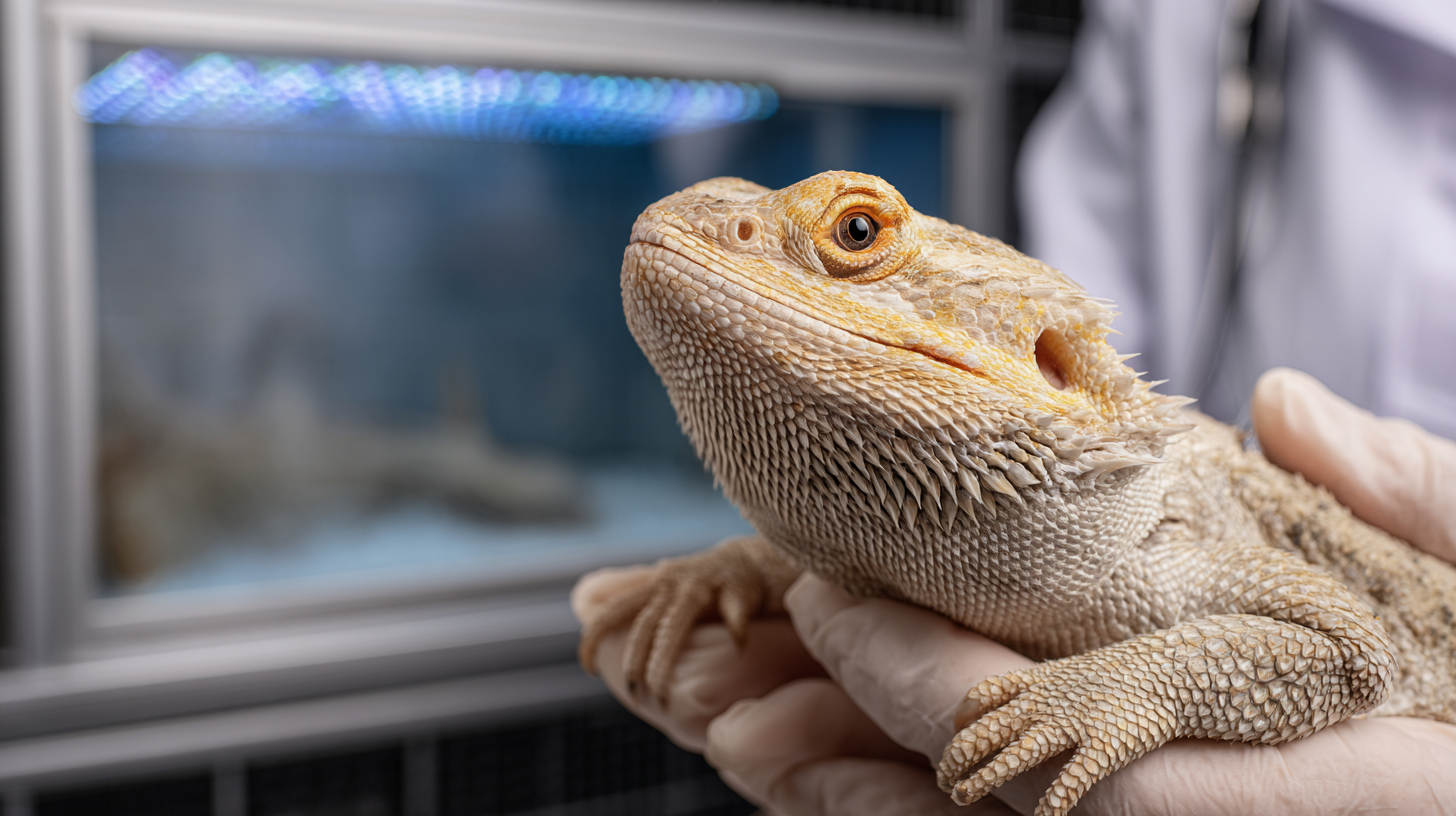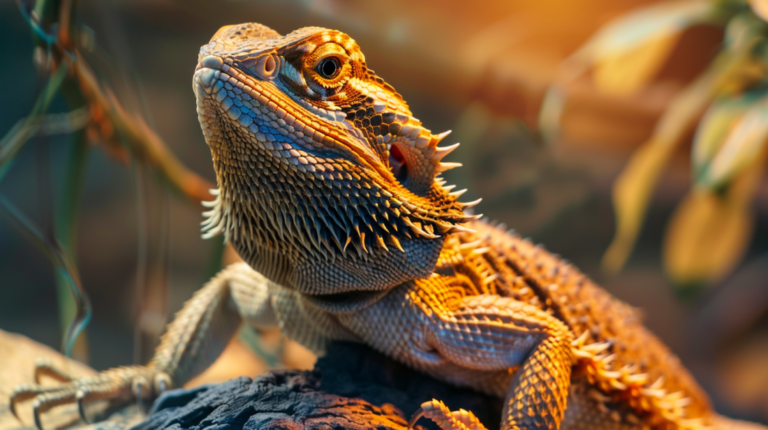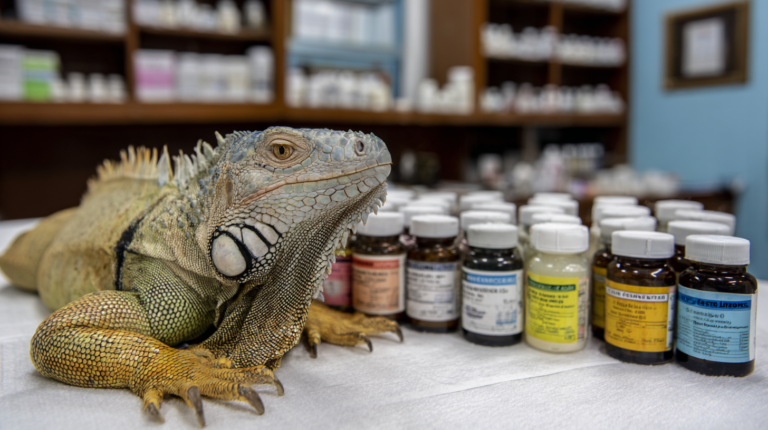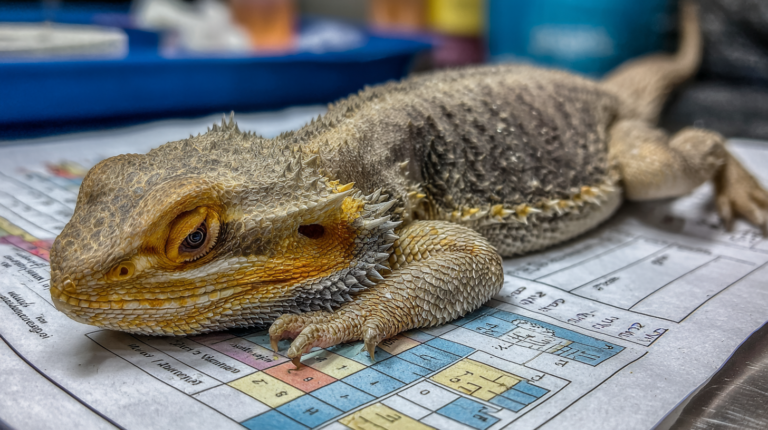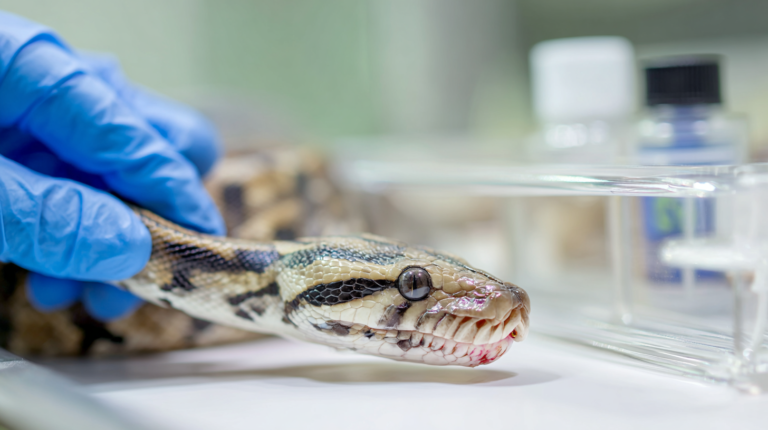Discover the 7 critical symptoms of respiratory infections in reptiles. Learn expert-backed prevention tips and when to seek veterinary care for your scaly companion.
Table of Contents
Respiratory infections in reptiles represent one of the most common yet serious health challenges facing reptile owners today. Unlike mammals, reptiles possess unique respiratory systems that make them particularly susceptible to bacterial, viral, and fungal infections when environmental conditions aren’t optimal. Understanding these infections isn’t just about recognizing symptoms—it’s about preserving the health and longevity of your scaly companion.
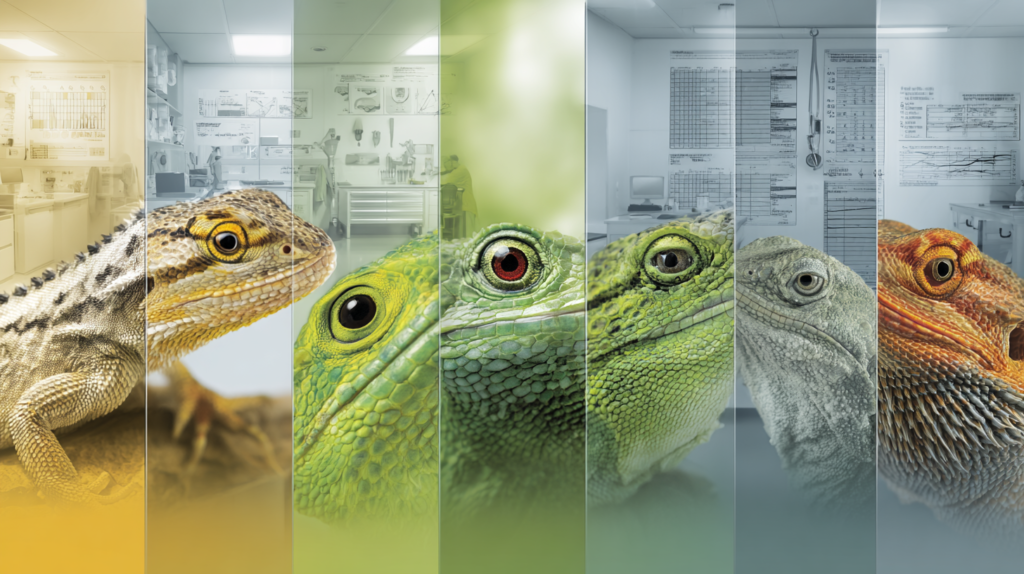
According to recent veterinary data, respiratory infections account for approximately 30% of all reptile-related veterinary visits, with bearded dragons, ball pythons, and iguanas being the most commonly affected species. The challenge lies in early detection, as reptiles are masters at hiding illness until symptoms become severe. This comprehensive guide will equip you with the knowledge to identify the seven critical symptoms of respiratory infections in reptiles, understand their underlying causes, and take decisive action to protect your pet’s health.
Understanding Respiratory Infections in Reptiles
| Symptom | Description | Severity Level | Action Required |
|---|---|---|---|
| 1 Abnormal Breathing Patterns | Rapid, labored, or irregular breathing patterns indicating respiratory distress | Critical | Immediate veterinary attention required |
| 2 Audible Respiratory Sounds | Wheezing, clicking, or crackling sounds during breathing | High | Veterinary consultation within 24 hours |
| 3 Nasal and Oral Discharge | Mucus, pus, or fluid discharge from nose or mouth | High | Monitor closely, seek veterinary care |
| 4 Behavioral Changes | Lethargy, reduced activity, hiding behavior, weakness | Moderate | Schedule veterinary examination |
| 5 Loss of Appetite | Refusing food, difficulty swallowing, feeding problems | High | Monitor weight, veterinary assessment |
| 6 Skin Color Changes | Cyanosis (blue/purple), pale coloration, dull appearance | Critical | Emergency veterinary care immediately |
| 7 Mouth Breathing | Open-mouth breathing, gaping, extended neck posture | Critical | Immediate emergency intervention |
The Reptilian Respiratory System
Reptiles possess a fundamentally different respiratory system compared to mammals. Most reptiles have simpler lung structures, with some species like snakes having only one functional lung. This anatomical difference makes them more vulnerable to respiratory complications when environmental stressors compromise their immune systems.
The respiratory system in reptiles includes the trachea, bronchi, and lungs, but lacks the complex branching found in mammalian lungs. Instead, reptile lungs often have a honeycomb-like structure with air sacs that facilitate gas exchange. This design, while efficient for their metabolic needs, creates conditions where pathogens can establish infections more easily when the animal’s defenses are compromised.
Primary Causes of Respiratory Infections
Respiratory infections in reptiles typically stem from environmental factors that create stress and compromise immune function. Poor husbandry practices account for approximately 85% of reptile respiratory infections, according to the Association of Reptilian and Amphibian Veterinarians (ARAV).
Environmental Stressors:
- Inadequate temperature gradients
- Improper humidity levels
- Poor ventilation
- Contaminated substrate
- Overcrowding
- Inadequate UV lighting
Pathogenic Causes:
- Bacterial infections (most common)
- Viral infections
- Fungal infections
- Parasitic infections
- Mixed infections
Temperature regulation plays a crucial role in reptile health. When temperatures drop below optimal ranges, reptiles cannot maintain proper immune function, making them susceptible to opportunistic pathogens. Similarly, humidity levels that are too high or too low can stress the respiratory system and create conditions favorable for pathogen growth.
The 7 Critical Symptoms of Respiratory Infections in Reptiles
1. Abnormal Breathing Patterns and Respiratory Distress
The most immediate and concerning symptom of respiratory infections in reptiles is altered breathing patterns. Healthy reptiles typically breathe slowly and quietly, with subtle chest movements that may be barely noticeable during rest periods.
Key Indicators:
- Rapid, shallow breathing (tachypnea)
- Labored breathing with visible effort
- Irregular breathing patterns
- Breathing with the mouth open
- Extended neck positioning while breathing
Open-mouth breathing is particularly concerning in reptiles, as they rarely breathe through their mouths under normal circumstances. This behavior indicates significant respiratory distress and requires immediate veterinary attention. Dr. Sarah Mitchell, a board-certified reptile veterinarian with over 15 years of experience, notes: “When reptiles resort to mouth breathing, they’re telling us their nasal passages and upper respiratory tract are severely compromised. This is equivalent to a medical emergency.”
Rapid breathing in reptiles can also indicate pain, stress, or metabolic issues, but when combined with other respiratory symptoms, it strongly suggests infection. The normal respiratory rate varies by species, but generally ranges from 10-30 breaths per minute for most common pet reptiles.
2. Audible Respiratory Sounds
Healthy reptiles are typically silent breathers. The presence of audible sounds during breathing indicates obstruction or irritation within the respiratory tract.
Common Respiratory Sounds:
- Wheezing or whistling sounds
- Crackling or rattling noises
- Clicking sounds during breathing
- Gurgling sounds indicating fluid accumulation
- Hissing sounds unrelated to defensive behavior
These sounds often indicate the presence of mucus, fluid, or inflammatory debris within the respiratory tract. Wheezing suggests narrowed airways, while crackling sounds may indicate fluid accumulation in the lungs. Clicking sounds often point to upper respiratory tract issues, particularly around the glottis or upper trachea.
The intensity and frequency of these sounds can help gauge the severity of the infection. Intermittent sounds may indicate early-stage infection, while constant audible breathing suggests advanced disease requiring immediate intervention.
3. Nasal and Oral Discharge
Discharge from the nose or mouth is a clear indicator of respiratory infection in reptiles. Unlike mammals, reptiles don’t typically produce nasal secretions under normal circumstances.
Types of Discharge:
- Clear, watery discharge (early infection)
- Thick, mucoid discharge (established infection)
- Yellow or green purulent discharge (bacterial infection)
- Blood-tinged discharge (severe infection or trauma)
- Foam or bubbles around the mouth
The character and color of discharge provide valuable diagnostic information. Clear discharge may indicate viral infection or early bacterial involvement, while thick, colored discharge typically suggests established bacterial infection. Blood-tinged discharge is particularly concerning and may indicate severe inflammation, tissue damage, or secondary complications.
Discharge may be constant or intermittent, and its presence often correlates with the severity of infection. Owners should monitor for discharge during regular handling and observation periods, as reptiles may clean away secretions, making detection challenging.
4. Behavioral Changes and Lethargy
Reptiles experiencing respiratory infections often display significant behavioral changes as their bodies redirect energy toward fighting infection.
Common Behavioral Indicators:
- Increased hiding and reduced activity
- Reluctance to move or explore
- Decreased responsiveness to stimuli
- Abnormal positioning or posture
- Reduced interest in food
- Increased time spent basking
Lethargy in reptiles can be subtle and may be mistaken for normal behavior by inexperienced owners. However, significant changes from baseline activity levels warrant attention. Reptiles with respiratory infections often spend more time in their basking spots, attempting to raise their body temperature to support immune function.
Positioning changes are particularly noteworthy. Reptiles with respiratory distress may assume positions that facilitate breathing, such as keeping their heads elevated or stretching their necks. These postural changes indicate the animal’s attempt to optimize airflow and oxygen exchange.
5. Loss of Appetite and Feeding Difficulties
Respiratory infections significantly impact a reptile’s ability and willingness to eat. The interconnected nature of the respiratory and digestive systems means that breathing difficulties directly affect feeding behavior.
Feeding-Related Symptoms:
- Complete loss of appetite (anorexia)
- Reluctance to strike at food
- Difficulty swallowing
- Regurgitation of food
- Preference for smaller food items
- Increased time required for feeding
The mechanism behind appetite loss involves multiple factors. Nasal congestion impairs the sense of smell, which is crucial for food recognition in many reptiles. Additionally, the effort required for breathing leaves less energy available for digestion and food processing.
Regurgitation may occur when respiratory distress interferes with normal swallowing mechanisms. The shared pathway of the respiratory and digestive systems in the upper throat area means that inflammation or obstruction can affect both functions simultaneously.
6. Changes in Skin Color and Appearance
Respiratory infections often cause systemic changes that manifest in altered skin coloration and appearance. These changes reflect the body’s physiological response to infection and reduced oxygen levels.
Visual Indicators:
- Darker or duller coloration
- Cyanosis (blue/purple tinge) around the mouth
- Pale or washed-out appearance
- Retained shed skin
- Reduced skin elasticity
- Swelling around the head or neck
Cyanosis is particularly concerning as it indicates inadequate oxygen levels in the blood. This blue or purple discoloration is most visible around the mouth, tongue, and other areas with thinner skin. The presence of cyanosis indicates severe respiratory compromise requiring emergency veterinary care.
Changes in normal coloration patterns may be subtle but are often the first visible signs of systemic illness. Reptiles that normally display vibrant colors may appear dull or faded when fighting infection. These changes reflect the redirection of energy from normal physiological processes to immune system function.
7. Mouth Breathing and Gaping
Mouth breathing represents one of the most serious symptoms of respiratory infections in reptiles. This behavior is abnormal for most reptile species and indicates severe respiratory distress.
Characteristics of Pathological Mouth Breathing:
- Persistent open-mouth posture
- Visible throat movements
- Extended periods of gaping
- Difficulty closing the mouth
- Tongue protrusion
- Excessive throat movement
Unlike defensive gaping, which is brief and associated with threat displays, pathological mouth breathing is sustained and occurs regardless of environmental stressors. This behavior indicates that normal nasal breathing is insufficient to meet the animal’s oxygen needs.
The progression from normal breathing to mouth breathing often occurs gradually, making early detection challenging. Owners should monitor for any increase in mouth-open behavior, particularly during rest periods when defensive responses are unlikely.
| Reptile Species | Risk Level | Primary Risk Factors | Prevention Focus |
|---|---|---|---|
| Ball Python | High | Humidity sensitivity, temperature drops, stress from handling | Maintain 60-80% humidity, stable temperatures |
| Bearded Dragon | High | Environmental changes, poor ventilation, overcrowding | Proper UVB lighting, adequate basking spots |
| Green Iguana | Moderate | Temperature fluctuations, dietary deficiencies, import stress | High humidity (70-80%), vitamin C supplementation |
| Leopard Gecko | Low | Substrate ingestion, poor hygiene, overcrowding | Clean substrate, regular enclosure maintenance |
| Corn Snake | Moderate | Substrate moisture, temperature gradients, seasonal changes | Proper substrate selection, thermal regulation |
| Blue-Tongued Skink | Moderate | Respiratory anatomy, humidity extremes, bacterial exposure | Balanced humidity (40-60%), good air circulation |
| Russian Tortoise | Low | Cold exposure, wet conditions, hibernation issues | Dry environment, proper winter care protocols |
Species-Specific Considerations
Snakes and Respiratory Infections
Snakes present unique challenges in respiratory infection management due to their anatomy and behavior. Ball pythons, corn snakes, and boas are particularly susceptible to respiratory infections, especially during seasonal transitions or after transportation stress.
Snake-Specific Symptoms:
- Kinked or S-shaped neck positioning
- Inability to fully close the mouth
- Audible breathing sounds during movement
- Reduced coiling behavior
- Preference for elevated positions
The single functional lung in most snake species means that respiratory infections can quickly become life-threatening. Early intervention is crucial, as the reduced respiratory capacity leaves little margin for error.
Lizards and Respiratory Health
Bearded dragons, geckos, and iguanas each present distinct patterns of respiratory infection symptoms. Bearded dragons are particularly prone to respiratory infections due to their desert origins and sensitivity to humidity changes.
Lizard-Specific Indicators:
- Beard darkening without apparent stress
- Reduced arm-waving or head-bobbing behavior
- Difficulty with thermoregulation
- Changes in basking duration
- Altered climbing behavior
Chelonians and Respiratory Challenges
Turtles and tortoises face unique respiratory challenges due to their shell structure and often aquatic lifestyles. Aquatic species are particularly susceptible to respiratory infections when water quality is poor.
Turtle-Specific Symptoms:
- Floating at odd angles in water
- Reluctance to submerge
- Asymmetrical swimming patterns
- Difficulty retracting head into shell
- Nasal discharge more visible due to positioning
This infographic would display a central reptile silhouette surrounded by seven distinct sections, each highlighting one critical symptom. Visual indicators would include breathing pattern diagrams, discharge color charts, behavioral comparison images, and emergency warning symbols. The design would use clear, veterinary-accurate illustrations with easy-to-understand icons and color coding for symptom severity levels.
Diagnostic Approaches and Veterinary Care
Initial Assessment and History
Veterinary diagnosis of respiratory infections in reptiles begins with a comprehensive history and physical examination. The veterinarian will assess environmental conditions, recent changes in husbandry, and the timeline of symptom development.
Key Diagnostic Steps:
- Detailed environmental history
- Physical examination including oral cavity inspection
- Respiratory rate and pattern assessment
- Neurological function evaluation
- Temperature and weight monitoring
Advanced Diagnostic Techniques
Modern reptile medicine employs various diagnostic tools to identify respiratory infections and their underlying causes.
Diagnostic Methods:
- Radiography (X-rays) to visualize lung fields
- Bacterial culture and sensitivity testing
- Cytological examination of discharge
- Blood work to assess systemic involvement
- Endoscopic examination in complex cases
Radiography is particularly valuable in reptiles as it can reveal the extent of lung involvement and identify complications such as pneumonia or abscess formation. The unique anatomy of reptile lungs requires specialized interpretation by experienced veterinarians.
Treatment Protocols
Treatment of respiratory infections in reptiles typically involves a multi-faceted approach addressing both the infection and underlying environmental factors.
Treatment Components:
- Appropriate antibiotic therapy based on culture results
- Environmental optimization
- Supportive care including fluid therapy
- Nebulization therapy for direct respiratory treatment
- Nutritional support during recovery
Antibiotic selection requires careful consideration of reptile physiology and metabolism. Drugs effective in mammals may not achieve therapeutic levels in reptiles due to their unique pharmacokinetics.
| Timeline Phase | Diagnostic Methods | Treatment Interventions | Expected Outcomes |
|---|---|---|---|
| Day 1-2 Initial Assessment |
Physical Examination Respiratory Rate Visual Assessment Temperature Check |
Immediate environmental optimization
Temperature/humidity adjustment
Stress reduction measures
Initial supportive care
|
Symptom documentation
Baseline establishment
Emergency care if severe
|
| Day 3-5 Detailed Diagnostics |
Culture & Sensitivity Radiography Blood Work Cytology |
Targeted antibiotic therapy
Nebulization treatments
Nutritional support
Hydration therapy
|
Pathogen identification
Treatment plan refinement
Initial symptom improvement
|
| Week 1-2 Active Treatment |
Progress Monitoring Symptom Tracking Weight Monitoring Appetite Assessment |
Continued antibiotic course
Environmental maintenance
Supportive medications
Assisted feeding if needed
|
Significant symptom reduction
Improved appetite/activity
Normalized breathing
|
| Week 3-4 Recovery Phase |
Follow-up Examination Culture Recheck Imaging Review Behavioral Assessment |
Gradual medication reduction
Return to normal husbandry
Immune system support
Activity level increase
|
Complete symptom resolution
Normal behavior patterns
Full recovery confirmation
|
| Month 2+ Long-term Management |
Periodic Check-ups Preventive Screening Environmental Monitoring Health Maintenance |
Preventive care protocols
Environmental optimization
Nutritional enhancement
Regular health monitoring
|
Prevention of recurrence
Optimal health maintenance
Enhanced immune function
Lifelong vigilance required
|
Prevention Strategies and Best Practices
Environmental Management
Preventing respiratory infections in reptiles requires meticulous attention to environmental factors that support immune function and respiratory health.
Critical Environmental Factors:
- Maintaining species-appropriate temperature gradients
- Proper humidity control and monitoring
- Adequate ventilation without drafts
- Clean, appropriate substrate selection
- Regular habitat cleaning and disinfection
Temperature management is perhaps the most critical factor in respiratory infection prevention. Each species has specific temperature requirements that must be maintained consistently. Digital thermometers with probe capabilities provide accurate monitoring of both ambient and surface temperatures.
Humidity control requires species-specific approaches. Desert species may require humidity levels below 40%, while tropical species may need 60-80% humidity. Hygrometers should be calibrated regularly to ensure accurate readings.
Quarantine Protocols
New reptiles should undergo quarantine periods to prevent introduction of pathogens to existing collections. This practice is essential for preventing respiratory infections and other communicable diseases.
Quarantine Best Practices:
- Minimum 90-day quarantine period
- Separate air circulation systems
- Dedicated equipment and handling tools
- Regular health monitoring and veterinary examinations
- Gradual introduction protocols
Stress Reduction Techniques
Chronic stress significantly compromises immune function in reptiles, making them more susceptible to respiratory infections. Identifying and minimizing stress factors is crucial for prevention.
Stress Reduction Strategies:
- Consistent daily routines
- Appropriate hiding places and security
- Minimizing handling during adjustment periods
- Proper lighting schedules
- Avoiding overcrowding
Nutritional Support and Immune Function
Dietary Considerations
Proper nutrition plays a vital role in maintaining respiratory health and supporting immune function in reptiles. Nutritional deficiencies can compromise the respiratory system’s ability to resist infection.
Nutritional Factors:
- Vitamin A deficiency increases respiratory infection risk
- Proper calcium-to-phosphorus ratios support immune function
- Adequate protein levels for tissue repair
- Appropriate vitamin D3 synthesis or supplementation
- Species-specific dietary requirements
Vitamin A deficiency is particularly problematic for respiratory health, as it affects the integrity of mucous membranes lining the respiratory tract. Squamous metaplasia, a condition resulting from vitamin A deficiency, makes reptiles highly susceptible to respiratory infections.
Supplementation Protocols
Vitamin and mineral supplementation requires careful consideration of species-specific needs and potential interactions. Over-supplementation can be as harmful as deficiency.
Supplementation Guidelines:
- Veterinarian-approved supplementation schedules
- Quality control of supplement sources
- Regular monitoring of supplementation effects
- Adjustment based on life stage and health status
- Integration with natural food sources
Emergency Response and First Aid
Recognizing Emergency Situations
Certain respiratory symptoms in reptiles constitute medical emergencies requiring immediate veterinary intervention. Recognizing these signs can mean the difference between recovery and loss of the animal.
Emergency Symptoms:
- Continuous mouth breathing
- Blue or purple discoloration around the mouth
- Complete inability to breathe through the nose
- Severe lethargy or unresponsiveness
- Bloody discharge from mouth or nose
First Aid Measures
While emergency veterinary care is essential, certain first aid measures can be implemented while seeking professional help.
Immediate Actions:
- Increase environmental temperature within safe ranges
- Ensure adequate humidity levels
- Provide quiet, stress-free environment
- Avoid force-feeding or unnecessary handling
- Monitor and document symptoms for veterinary consultation
Temperature elevation supports immune function and may help the reptile fight infection more effectively. However, temperatures should not exceed species-specific maximums, as overheating can cause additional stress and complications.
Long-Term Management and Recovery
Recovery Expectations
Recovery from respiratory infections in reptiles varies significantly based on the severity of infection, underlying health status, and promptness of treatment initiation. Most reptiles show improvement within 7-14 days of appropriate treatment.
Recovery Indicators:
- Gradual return to normal breathing patterns
- Increased appetite and feeding response
- Improved activity levels
- Resolution of discharge
- Return to normal coloration
Post-Treatment Care
Successful treatment of respiratory infections requires ongoing monitoring and environmental management to prevent recurrence.
Post-Treatment Protocols:
- Continued environmental optimization
- Regular veterinary follow-up examinations
- Gradual return to normal handling routines
- Monitoring for signs of recurring infection
- Documentation of treatment response
Prevention of Recurrence
Reptiles that have experienced respiratory infections may be more susceptible to future episodes. Long-term prevention strategies focus on maintaining optimal environmental conditions and supporting immune function.
Recurrence Prevention:
- Strict adherence to environmental parameters
- Regular health monitoring
- Prompt attention to minor symptoms
- Stress reduction protocols
- Proactive veterinary care
Professional Resources and Support
Veterinary Specialists
Locating qualified reptile veterinarians is crucial for proper diagnosis and treatment of respiratory infections. Board-certified exotic animal veterinarians or those with extensive reptile experience provide the best care outcomes.
Finding Qualified Veterinarians:
- Association of Reptilian and Amphibian Veterinarians (ARAV) directory
- Local herpetological society recommendations
- Veterinary school exotic animal departments
- Online veterinary consultation services
- Emergency exotic animal clinics
Educational Resources
Continuing education about reptile care and health management helps owners provide better care and recognize problems early.
Recommended Resources:
- Peer-reviewed veterinary journals
- Professional herpetological society publications
- University extension programs
- Accredited online courses
- Veterinary-approved care guides
Frequently Asked Questions
Expert answers to common concerns about respiratory infections in reptiles
Respiratory infections in reptiles can develop rapidly, often within 24-48 hours of exposure to stressful conditions or pathogens. However, symptoms may not become apparent until the infection has progressed significantly, as reptiles are adept at hiding signs of illness. Environmental stressors such as temperature drops, humidity changes, or poor air quality can trigger infections in previously healthy reptiles. Early detection requires regular observation and familiarity with your reptile’s normal behavior patterns.
Most respiratory infections in reptiles are species-specific and do not pose direct transmission risks to humans. However, some bacterial pathogens such as Salmonella can potentially affect both reptiles and humans. Proper hygiene practices, including thorough handwashing after handling reptiles or cleaning their enclosures, minimize any potential risks. Immunocompromised individuals should exercise additional caution and consult with healthcare providers about reptile contact.
Upper respiratory infections affect the nasal passages, throat, and upper trachea, typically causing symptoms like nasal discharge, mouth breathing, and audible breathing sounds. Lower respiratory infections involve the lungs and lower airways, often resulting in more severe symptoms including labored breathing, reduced activity, and potentially life-threatening complications. Lower respiratory infections generally require more aggressive treatment and have longer recovery periods.
Treatment duration varies based on infection severity and the reptile’s overall health status. Mild infections may resolve within 7-14 days of appropriate treatment, while severe infections can require 4-6 weeks or longer. Antibiotic therapy typically continues for at least one week beyond symptom resolution to ensure complete pathogen elimination. Environmental optimization must continue throughout treatment and beyond to prevent recurrence.
Yes, some species are more susceptible to respiratory infections due to their anatomy, environmental requirements, or captive breeding practices. Ball pythons, bearded dragons, and green iguanas are commonly affected, often due to their sensitivity to environmental changes. Species with complex humidity requirements or those frequently imported from wild populations may face higher infection risks. Proper species-specific husbandry significantly reduces susceptibility regardless of species.
While complete prevention isn’t always possible, proper husbandry practices can dramatically reduce the risk of respiratory infections. Maintaining appropriate temperature and humidity levels, ensuring proper ventilation, providing clean environments, and minimizing stress factors are key prevention strategies. Regular veterinary checkups and quarantine protocols for new animals also contribute to prevention efforts. However, even with excellent care, some infections may still occur due to factors beyond owner control.
For more expert pet care tips and product recommendations, visit https://BlithePet.com your trusted source for pet wellness.
Conclusion
Respiratory infections in reptiles represent a serious health concern that requires prompt recognition and appropriate treatment. The seven critical symptoms outlined in this guide—abnormal breathing patterns, audible respiratory sounds, nasal and oral discharge, behavioral changes, loss of appetite, skin color changes, and mouth breathing—serve as early warning signs that can help save your reptile’s life.
Understanding these symptoms empowers reptile owners to take swift action when problems arise. However, prevention through proper husbandry practices remains the most effective approach to maintaining respiratory health in reptiles. Consistent environmental management, stress reduction, proper nutrition, and regular veterinary care form the foundation of respiratory infection prevention.
Remember that reptiles are masters at hiding illness, making regular observation and familiarity with normal behavior patterns essential for early detection. When in doubt, consult with a qualified reptile veterinarian, as early intervention significantly improves treatment outcomes and reduces the risk of complications.
The investment in proper reptile care pays dividends in the form of healthier, longer-lived animals that can provide years of companionship and enjoyment. By staying informed about respiratory health and maintaining optimal environmental conditions, reptile owners can significantly reduce the risk of respiratory infections and ensure their scaly companions thrive in captivity.
Have a similar experience with your pet? Share it in the comments below!

